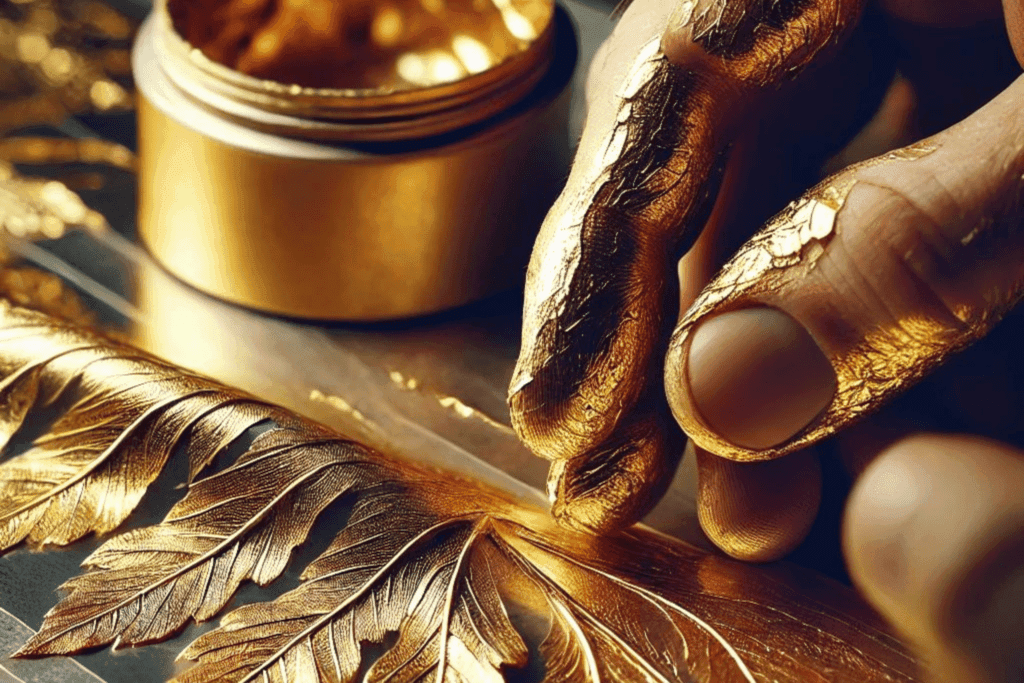The Allure of Gold Jewelry: A Comprehensive Guide
As someone who’s been fascinated by the shimmer and shine of gold jewelry for years, I can’t help but marvel at its enduring appeal. From ancient civilizations to modern-day fashion, gold has always held a special place in our hearts and on our bodies. But there’s so much more to this precious metal than meets the eye. Have you ever wondered about the difference between 14K and 18K gold? Or how to spot a fake gold necklace? Well, you’re in luck! I’m about to take you on a golden journey through everything you need to know about this precious metal and its role in jewelry.
Understanding Gold Karat: What the Numbers Mean for Your Jewelry

Let’s start with the basics. When shopping for this yellow metal, you’ve probably noticed numbers like 10K, 14K, 18K, or even 24K. But what do these numbers mean?
Gold Karat Explained
The karat system is a way to measure the purity of gold. Pure gold is 24 karats, but it’s too soft for everyday wear. That’s why jewelers mix gold with other metals to create different karats:
- 24K: 100% pure gold
- 18K: 75% gold
- 14K: 58.3% gold
- 10K: 41.7% gold
The higher the karat, the purer the gold, but also the softer and more expensive the jewelry. So, when you’re choosing gold jewelry, you’re balancing purity, durability, and cost.
The History of Gold Jewelry: From Ancient Civilizations to Modern-Day
Gold’s allure isn’t just a modern phenomenon. Its history is as rich as its color!
A Golden Timeline: History of Aurum in Jewelry
- Ancient Egypt: Pharaohs adorned themselves with gold to show their divine status.
- Ancient Greece and Rome: Gold was associated with the gods and used in religious ceremonies.
- Middle Ages: This Noble metal became a symbol of wealth and power among the nobility.
- Renaissance: Intricate gold designs flourished, showcasing the era’s artistic revival.
- Industrial Revolution: Mass production made this monetary metal more accessible to the middle class.
- Modern Era: This aureate resource continues to be a staple in both high-end and everyday jewelry.
It’s fascinating to think that when we wear gold jewelry today, we’re participating in a tradition that spans millennia!
How to Determine the Value of Your Bullion-Crafted Pieces
Ever wondered how much that family heirloom or vintage find is worth? Valuing gthemolden accessories isn’t just about weighing it on a scale.
Factors in Valuing Precious Metal Ornaments
1. Purity (karat)
2. Weight
3. Current market price of gold
4. Craftsmanship and design
5. Historical or cultural significance
6. Brand name (if applicable)
7. Condition of the piece
Remember, an appraisal from a certified jeweler is the most accurate way to determine your jewelry’s value. They can consider all these factors and give you a professional assessment.
Gold Plated vs. Solid Gold: A Comprehensive Comparison

When shopping for gold jewelry, you might come across terms like “gold plated” or “solid gold.” But what’s the difference, and which should you choose?
Gold Plated vs Solid Gold: What’s the Deal?
Gold-plated jewelry:
- Thin layer of gold over a base metal
- More affordable
- Less durable (plating can wear off)
- Good for trendy, short-term pieces
Solid gold jewelry:
- Made entirely of gold alloy
- More expensive
- Highly durable and long-lasting
- Retains value over time
- Ideal for investment pieces and heirlooms
Your choice depends on your budget, how often you’ll wear the piece, and whether you’re looking for a long-term investment or a fashion statement.
Caring for Your Gold Jewelry: Tips for Longevity and Shine
Want to keep your gold jewelry looking as good as the day you bought it? Here are some gold jewelry care tips to maintain its luster:
1. Store pieces separately to avoid scratches
2. Remove before swimming or showering
3. Clean regularly with a soft cloth
4. Use mild soap and warm water for deeper cleaning
5. Avoid harsh chemicals and abrasives
6. Have professional cleaning done annually
With proper care, your gold jewelry can last a lifetime and beyond!
Popular Gold Jewelry Styles: A Guide to Timeless and Trendy Pieces

Gold jewelry comes in countless styles, from classic to contemporary. Here are some popular gold jewelry styles to consider:
1. Chain necklaces: From delicate to chunky
2. Hoop earrings: A versatile classic
3. Stackable rings: Mix and match for a personalized look
4. Charm bracelets: Tell your story through jewelry
5. Statement pendants: Make a bold impression
6. Minimalist studs: For everyday elegance
Remember, the best style is the one that makes you feel confident and beautiful!
Investing in Gold Jewelry: Pros, Cons, and What to Consider
Is gold jewelry a good investment? Let’s weigh the pros and cons:
Pros of Investing in Gold Jewelry
- Can appreciate in value over time
- Enjoyable to wear while investing
- Potential hedge against inflation
Cons of Investing in Gold Jewelry:
- Markup on craftsmanship
- Storage and insurance costs
- Less liquid than gold bullion
If you’re considering investing in gold jewelry, focus on high-karat pieces from reputable brands, and always keep your receipts and certificates of authenticity.
The Art of Gold Jewelry Making: Techniques and Craftsmanship

The creation of gold jewelry is a fascinating blend of art and science. Here are some gold jewelry-making techniques you might encounter:
- 1. Casting: Pouring molten gold into molds
- 2. Filigree: Intricate metalwork with tiny beads or twisted threads
- 3. Engraving: Carving designs into the surface
- 4. Stone setting: Securing gemstones in gold
- 5. Enameling: Adding colorful glass coatings to gold
Each technique requires skill and patience, contributing to the unique beauty of every piece.
Understanding Aureate Adornments: Hallmarks and Purity Stamps
Ever noticed those tiny markings on your golden accessories? They’re not just for decoration! Here’s a gold jewelry hallmarks guide:
- Purity mark: Indicates karat (e.g., 585 for 14K, 750 for 18K)
- Maker’s mark: Identifies the manufacturer
- Assay office mark: Shows where the piece was tested and stamped
- Date letter: Indicates the year of hallmarking (in some countries)
These marks help ensure the authenticity and quality of your metallic luxuries.
Gold Jewelry Trends: What’s Hot in 2024
Curious about the latest gold jewelry trends 2024 has to offer? Here’s what’s shining bright:
- 1. Chunky chain necklaces
- 2. Mismatched earrings
- 3. Personalized nameplates
- 4. Sculptural rings
- 5. Layered delicate pieces
- 6. Gold body chains
Remember, while trends are fun to follow, classic gold pieces never go out of style!
Choosing the Right Gold Color: Yellow, White, or Rose Gold?
When choosing gold jewelry color, consider your skin tone and personal style.
- Yellow gold: Classic, warm, suits most skin tones
- White gold: Modern, cool, great for those who also wear silver
- Rose gold: Romantic, versatile, flattering on all skin tones
Ultimately, the best choice is the one that makes you feel most confident and beautiful.
How to Spot Fake Gold Jewelry: Expert Tips and Tricks
With the prevalence of fake gold in the market, it’s crucial to know how to identify fake gold jewelry. Here are some tips:
1. Look for hallmarks
2. Use a magnet (real gold isn’t magnetic)
3. Check for discoloration
4. Perform a density test
5. Use a gold testing kit
When in doubt, always consult a professional jeweler for authentication.
The Environmental Impact of Metallic Luxuries in Production

As beautiful as gold jewelry is, it’s important to consider its environmental impact.
- Mining can lead to deforestation and water pollution
- Chemical processes used in extraction can be harmful
- High energy consumption in production
However, the industry is making strides towards more sustainable practices, including:
- Ethical sourcing
- Use of recycled gold
- More environmentally friendly extraction methods
As consumers, we can support these efforts by choosing brands committed to sustainability.
Yellow Metal as a Cultural Symbol: Meanings Around the World

The cultural significance of jewelry made from this commodity metal varies widely across the globe.
- India: Essential for weddings and religious ceremonies
- China: Symbolizes good luck and prosperity
- Western cultures: Often associated with wealth and status
- Ancient Egypt: Believed to have divine and magical properties
Understanding these cultural contexts can deepen our appreciation for this precious metal beyond its aesthetic value.
Antique and Vintage Aurum in Jewelry: A Collector’s Guide
For those interested in this antique aureate resource, here’s a quick guide:
- Georgian (1714-1837): Rare and highly valuable
- Victorian (1837-1901): Romantic motifs, often featuring mourning jewelry
- Art Nouveau (1890-1910): Nature-inspired designs
- Art Deco (1920s-1930s): Geometric patterns and bold colors
- Retro (1940s-1950s): Chunky designs influenced by Hollywood glamour
When collecting antique pieces, always verify authenticity and consider the historical context of each era.
Conclusion: The Timeless Appeal of Gold Jewelry
From its rich history to its modern-day versatility, precious metal ornaments continue to captivate us. Whether you’re a seasoned collector, a fashion enthusiast, or simply someone who appreciates the beauty of gold, I hope this guide has deepened your understanding and appreciation of this precious metal.
Remember, aureate finery is more than just an accessory—it’s a piece of art, a store of value, and often, a cherished memory. So the next time you clasp that gold necklace or slip on that gold ring, take a moment to appreciate the craftsmanship, history, and beauty that it represents.
What are your favorite pieces of golden accessories? Do you have any family heirlooms with stories to tell? I’d love to hear about them! And if you have any more questions about aureate finery, don’t hesitate to ask. After all, the world of gold is as vast and fascinating as the metal is brilliant and enduring.

